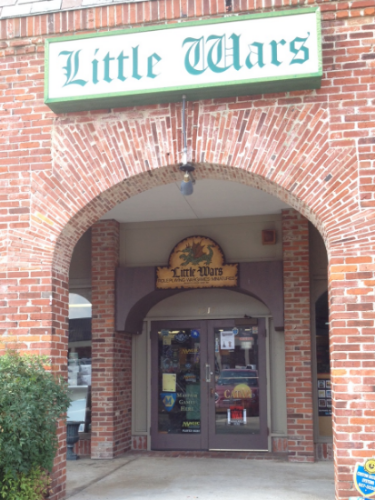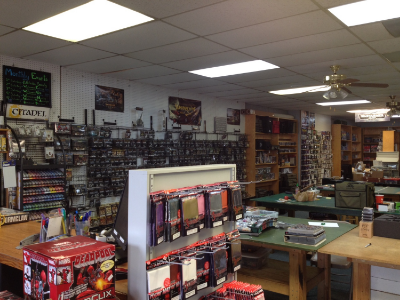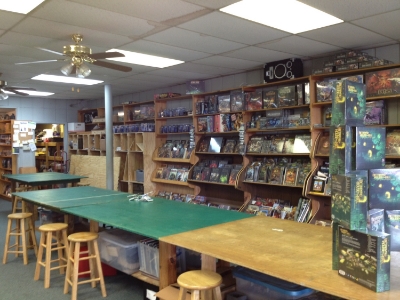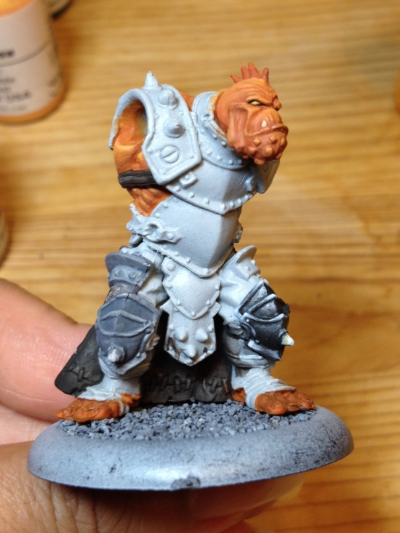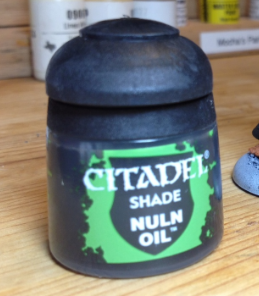Finally back home! I apologize for the delay. Since I started this blog, I've posted every Monday & Thursday. I haven't always posted super-early in the morning, but I've never missed a day's post... until yesterday. #shame. I've gotten hung up on a requested blog post about how our group goes about making characters for our Dungeons & Dragons game. I wanted to post it by today, but it's clear I need more time to include everything that I want to write about. We're also going to play on Sunday, so that'll make for a great Monday post to include the challenges & successes of our newest character creation. In the meantime, I wanted to share my game store adventure this past Wednesday!
First, here's a bit of mostly-relevant background about me & game stores:
My experience with game stores has been hit-or-miss. Usually, I'm uncomfortable in game stores. It's unsettling to have a room of people turn to look at you with expressions ranging from a confused "Are you lost?" to an accusatory, narrowing-of-the-eyes "You don't belong here". It used to make me super-self-conscious. My neck would heat up and get itchy while I walked as quickly as I could to the paint rack with my back to everyone so I didn't have to interact with anyone "judgey". The last time I went to my local Houston game shop, a guy actually blocked my path with his arm when I tried to walk by the side of his Warhammer game table. He cocked an eyebrow and said, in a patronizing tone, "Careful honey, you wouldn't understand how expensive these are". I wanted to punch him. I thought, "Yeah? Well it's a shame you wasted your money because your Imperial Knight there has a s*** paint job". But instead of being petty, I just turned and left the game shop. I haven't been back since. That was over six months ago. I know it's silly, but things like that really bother me and totally ruin my experience.
Now, fast-forward to this week:
While traveling for work, I stopped by "Little Wars", a game store in Baton Rouge. I've been before, and each time I would stick closely to the walls of paint & miniatures without asking a lot of questions. I was tired and kind of a mess from traveling and almost talked myself out of stopping by. However, I was relieved to find only two people in the store when I walked in-- Andy (the owner) & Charles (though I didn't ask Charles if he worked there or just visiting). While they were working on re-organizing things, moving product around, and talking amicably in the background, I enjoyed quietly browsing the store.
I like this place. Little Wars is part of an older brick strip mall of shops near Jefferson Highway & Corporate Boulevard. When you walk in, books for popular RPGs line the right side of the store-- plenty for the Pathfinder players! Card games, miniatures, and painting supplies are on the left. In the back right, there's a closet-like nook with tabletop board games-- many stocked primarily because of the growing popularity of the Will Wheaton/Felicia Day "Tabletop" web series. I knew I didn't have much room in my suitcase, so I didn't tempt myself there. In the very back of the store are bookcases with many different game starter sets (including the newest D&D box set), a few shelves of fantasy novels, and of course, Warhammer armies abound. Tables fill out the center of the large room for their group games and events. Lastly, basic accessories including dice, Magic card packs, and magazines are featured in & around the glass case at the front of the store.
In the past, I've bought a few D&D 4th edition books there and I was a little bummed to see that there was significantly less since my last visit-- makes sense I guess, since the new version of D&D was just released. For now, our group will keep playing 4th edition just because it's familiar. I have plenty of books (trust me) and my subscription to online tools at Wizards.com gives us plenty to work with. I was kind of happy Little Wars didn't have the books I usually browse, since and it gave me the chance to ask questions about different games I'd been interested in.
At first, I talked about just dropping in to pick up some painting supplies and asked if they were going to GenCon (one of the biggest gaming conventions in the US). Andy wasn't, but Charles and his friends were planning a road trip up to Indiana-- it'll be his first time at the convention. After that, we talked a bit about painting as a hobby and I asked what they thought about the new D&D version launch. The best part? They were open to my questions & actively helpful. I didn't get any of the clipped answers, attitude, or (worse) eye rolls & in-depth lectures in that know-it-all tone I've experienced at other places in the past. Our conversation evolved into other topics and I must've spent almost an hour just hanging out and talking. During that time, I asked questions like:
"What do you think about the Infinity game? I just discovered their miniatures, but I don't know much overall about the game. I know they launched a 2nd edition not too long ago-- is it worth looking into?"
"Have you had any success with synthetic brushes? It's so hard to find the Winsor & Newton Series 7 brushes in the US. What do you think of the other options?"
"I still can't seem to completely remove mold lines on my plastic/resin miniatures. What do you use?"
"Are there any books or magazines you'd recommend that feature painted miniatures more than game strategy?"
Andy introduced me to Warhammer: Visions-- a fairly new monthly publication from the creators of the White Dwarf magazine featuring some of the latest releases from Games Workshop. Perfect. I'd never heard of it, and it was just what I was looking for! I bought some paint and pins too:
I'll definitely be back next time I'm in town. I left Little Wars with my new book, painting supplies, and a renewed faith in game stores.

